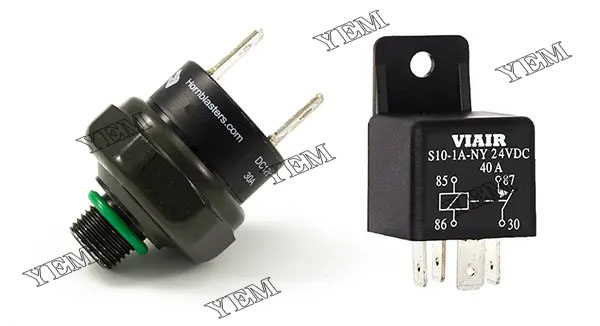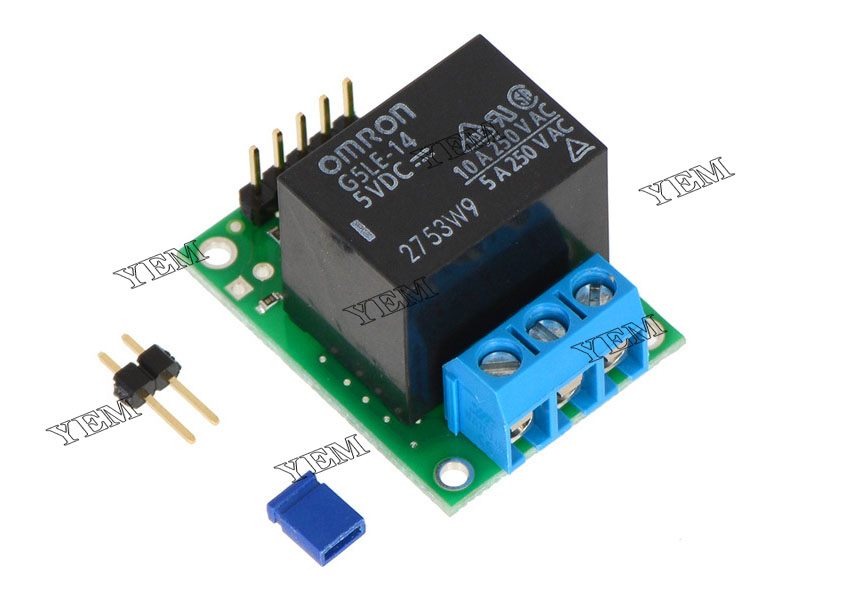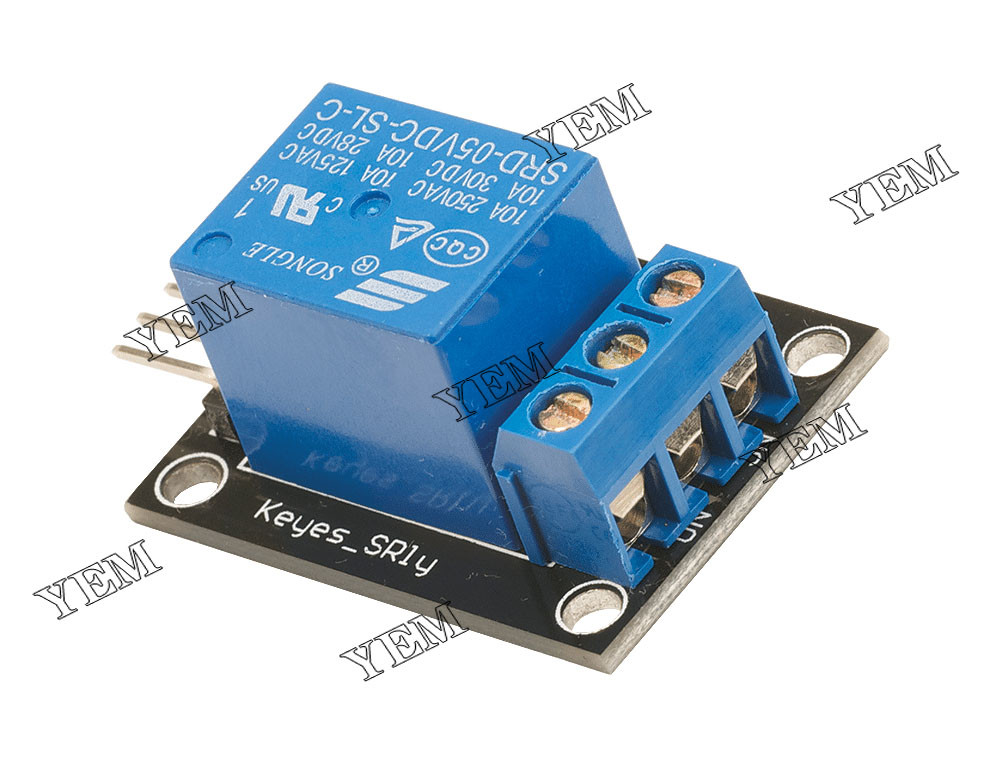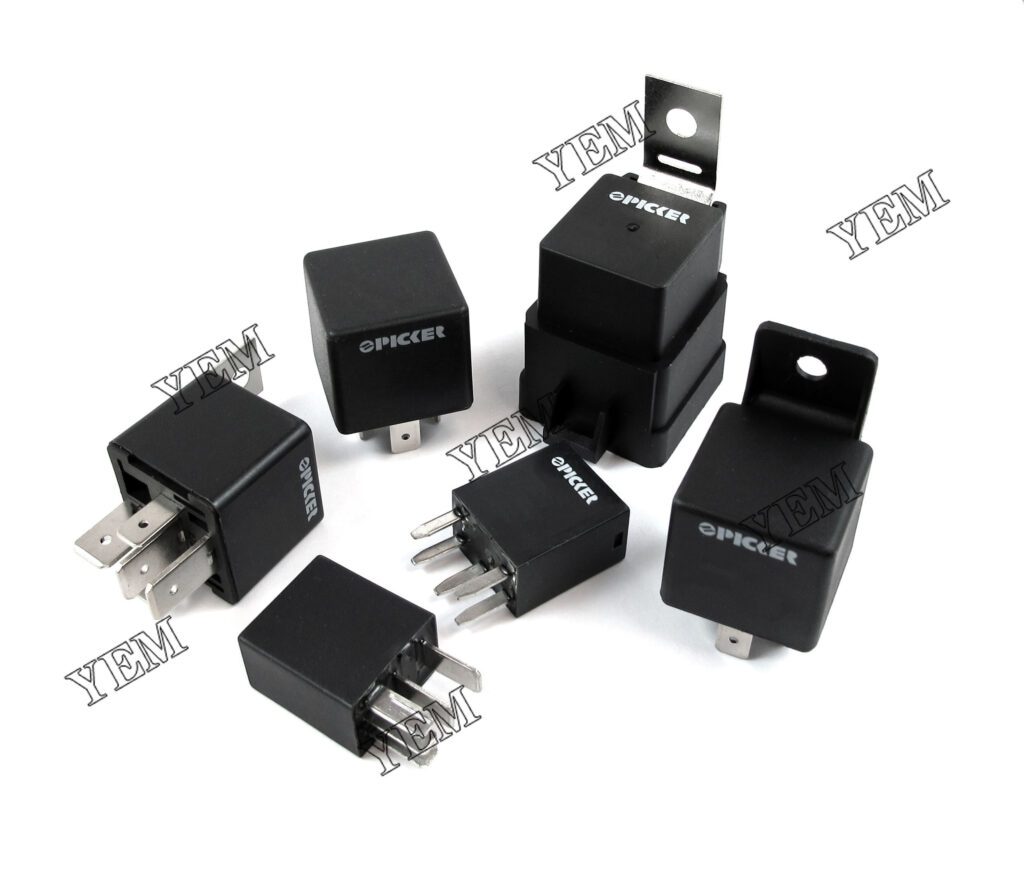What is an engine relay
The engine relay is an electrical device used to control and protect the normal operation of the engine-related circuits. It can be understood as an automatic electronic switch that can control the on-off of high-power circuits in the engine system.
Engine relays usually consist of a control circuit and a main circuit. The control circuit receives signals from the engine control unit (ECU) or other sensors, and when the control circuit receives a specific signal, the relay connects the main circuit so that current or signal can flow. When the control signal is removed or out of range, the relay disconnects the main circuit, stopping the flow of current or signal.
The engine relay plays many important roles in the car engine system, such as controlling the start of the engine, the power supply of the fuel pump, the switch of the ignition system, the operation of the air conditioner compressor, etc. They can withstand large current and high temperature environment, and provide good electrical isolation and protection functions to ensure the normal operation and safety of the engine system.
When the engine relay fails, it can cause problems such as the engine not starting, the fuel pump not supplying power, the ignition system not working, etc. Therefore, maintenance and timely replacement of damaged relays is critical to engine performance and reliability.

Types of engine relays
Engine relays can be divided into various types according to their different functions in the engine system. Here are some common types of engine relays:
- Starting relay: responsible for controlling the starting process of the engine, and transmitting current to the starter motor to start the engine.
- Fuel pump relay: used to control the power supply of the fuel pump to ensure that the fuel can be sent to the engine.
- Cooling fan relay: Control the fan in the engine cooling system to ensure that the fan can run in time to reduce the engine temperature when the engine temperature is too high.
- Ignition system relay: responsible for controlling the ignition system of the engine and transmitting the ignition signal to the ignition coil.
- Air conditioning compressor relay: used to control the compressor in the air conditioning system, starting and stopping the compressor to provide cooling effect.
- Fog light relay: Controls the fog lights in the engine area so that the fog lights can be turned on and off when required.
- Generator relay: Monitors and controls the engine’s generator to ensure that the battery can be charged normally to power the system.
These are just some of the common types of engine relays, there are actually other types of relays used to control and protect different circuits and functions in the engine system. The specific relay type and configuration can vary based on the specific engine system and vehicle type.
Trouble diagnosis of engine relay
When the engine relay fails, it can cause problems such as the engine not starting, the fuel pump not supplying power, the ignition system not working, etc. The following are some common methods for diagnosing engine relay faults:
- Check the relevant fuses: First, check the fuses related to the engine relay to make sure they are not blown or shorted. A damaged or blown fuse may cause the relay to not operate properly.
- Observe the working status of the relay: When starting the engine or operating related systems, observe whether the relay is working, that is, you can hear the “click” sound of the relay or feel the vibration of the relay. If the relay is not working, the relay itself may be faulty.
- Check the control signal: Use a multimeter or voltmeter to measure the control signal voltage of the relay. If the control signal voltage is normal but the relay still does not work, there may be an internal fault in the relay. If the control signal voltage is abnormal or no signal reaches the relay, the control circuit or sensor may be faulty.
- Replace the relay: If you suspect that the relay is faulty, you can try to replace it with a new relay for testing. If the problem is solved after replacement, it is confirmed that the original relay is faulty.
- Check wiring and sockets: Check the wiring connections and sockets associated with the relay to make sure they are not open, corroded, or loose. Bad contacts or damaged wiring and sockets can cause the relay to not function properly.
- Professional maintenance: If the above methods cannot solve the problem, it is recommended to seek help from professional technicians. They can use professional diagnostic tools and equipment to perform more in-depth fault diagnosis and repair of relays and related systems.
It should be noted that the above methods are for reference only, and specific fault diagnosis methods may vary depending on the model and problem. When performing maintenance and diagnosis, please follow relevant safety operating procedures and operate according to the specific conditions and technical requirements of the vehicle.

Relay care and maintenance
Relays are an important part of a car’s electrical system, and proper maintenance and care can prolong its life and ensure its reliability. Here are some maintenance and maintenance recommendations for relays:
- Regular inspection: Regularly check the connection and wiring of the relay to ensure that the plug and socket are not loose or corroded. Loose or corroded connections can cause poor contact or poor current transfer, affecting the proper functioning of the relay.
- Clean the relay pins and sockets: Use a non-abrasive electronics cleaner and a fine brush to clean the relay pins and sockets. Try to avoid using wet methods to prevent short circuits.
- Avoid overloading: Make sure the load of the relay is within its rated capacity. Exceeding the load capacity may cause the relay to burn out or shorten its life.
- High temperature protection: The relay is usually installed in the engine compartment and is easily affected by the high temperature environment. Make sure there is good ventilation around the relay to avoid overheating. Consider using an accessory such as a relay heat sink to reduce the operating temperature of the relay.
- Replace the damaged relay in time: If there are signs of relay failure, such as relay failure, heating or other abnormal phenomena, please replace the damaged relay in time. Delay in replacement could result in damage to other circuits or equipment.
It is important to note that specific maintenance and maintenance methods for relays may vary depending on the type of relay, vehicle model and manufacturer’s recommendations. Therefore, when performing maintenance and maintenance, please refer to the relevant vehicle manual or consult a professional technician.

Frequently Asked Questions
Here are answers to some frequently asked questions when it comes to engine relays:
- What are the signs of a faulty engine relay?
- The engine will not start or has difficulty starting.
- The fuel pump fails to provide power, resulting in no fuel supply to the engine.
- The ignition system does not work and the engine cannot ignite.
- The cooling fan does not work properly, causing the engine temperature to rise.
- Certain vehicle functions do not operate properly, such as the air conditioning compressor.
- Can I replace the engine relay myself?
- If you have certain automotive knowledge and skills, you can try to replace the engine relay yourself. But make sure you have some knowledge of proper operating procedures and safety protocols. Otherwise, it is recommended to seek help from professional technicians who can more accurately diagnose the problem and perform relay replacement.
- Can the engine relay be repaired?
- Some problems can be fixed by cleaning the relay’s pins or sockets. However, if there is damage or malfunction within the relay, it generally cannot be repaired. Replacing a new relay is the most common and reliable way to solve a fault.
- What type of engine relay should I buy?
- Purchase the engine relay appropriate for your specific vehicle make and model. It is recommended to choose original relays or certified and reliable brands. Make sure the relay size and power rating match the original relay.
- What is the lifespan of the engine relay?
- The service life of the engine relay is affected by many factors, including usage conditions, workload and quality. Generally, the life of an engine relay is about 5 to 10 years, but sometimes it can be shorter or longer.
Please note that these answers are for reference only and are based on general FAQs. Specific issues or specific vehicle conditions may vary. For more specific questions and concerns, it is recommended to consult a professional technician or refer to the relevant vehicle manual.

Contact us
YEM Professional Excavator Parts Team is a professional and experienced team specialized in supplying high quality excavator parts. With our extensive knowledge and expertise in this field, we offer a comprehensive range of parts and components to meet the diverse needs of our customers.
Whether you need replacement parts for hydraulic systems, engine components, chassis components or other excavator components, the YEM team can support you from all angles. We source our products from trusted manufacturers and ensure that each component meets the highest standards of quality and durability.
What sets us apart is our commitment to exceptional customer service. We understand the importance of timely support and strive to respond quickly to inquiries and requests. Our knowledgeable staff is on hand to help customers identify the correct parts for their particular excavator model and provide installation and maintenance instructions.
To get in touch with the YEM Specialized Excavator Parts team, you can get in touch via our website, email or phone. We are committed to building long-term relationships with our customers and are passionate about assisting with your excavator parts needs.
